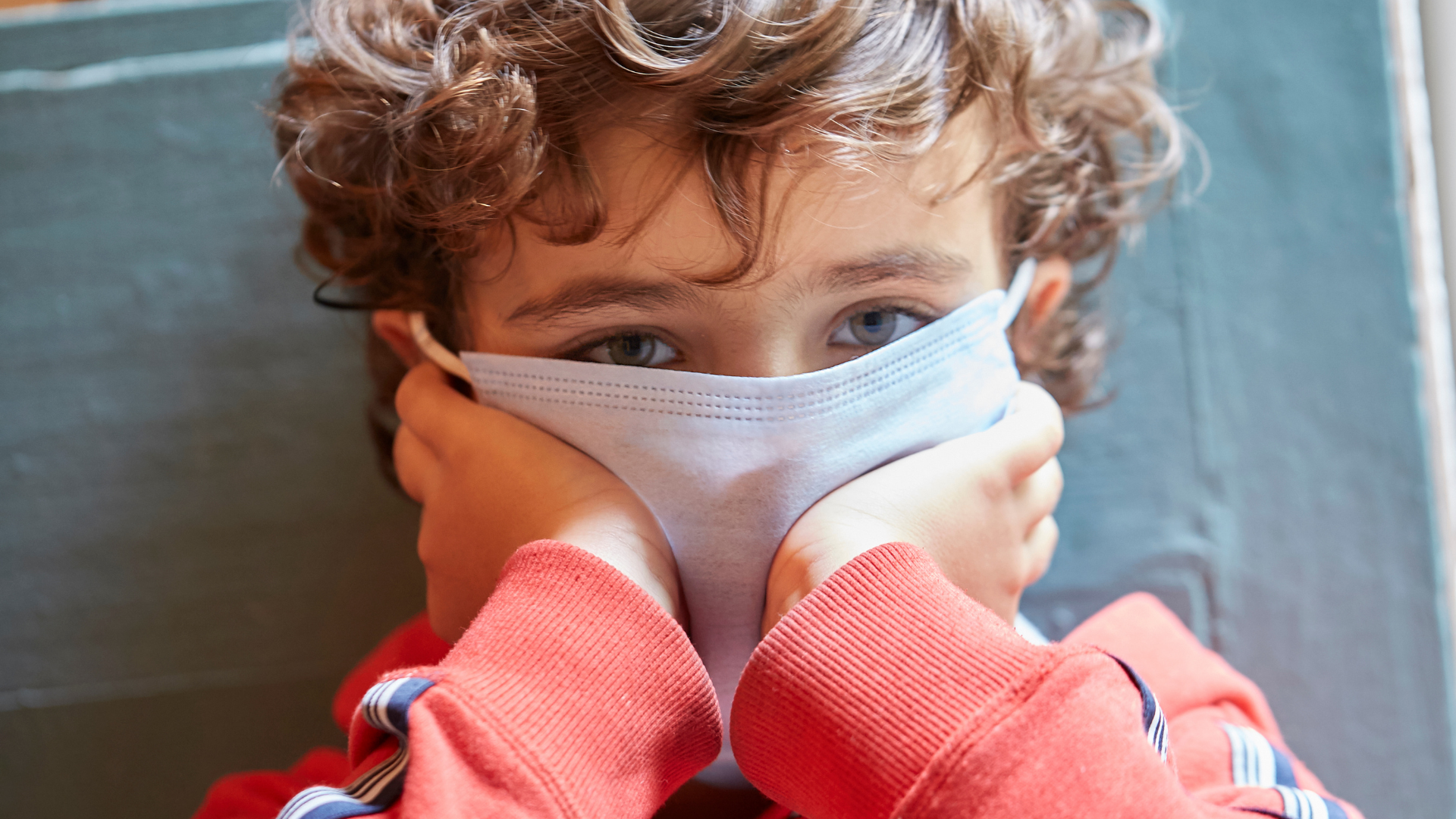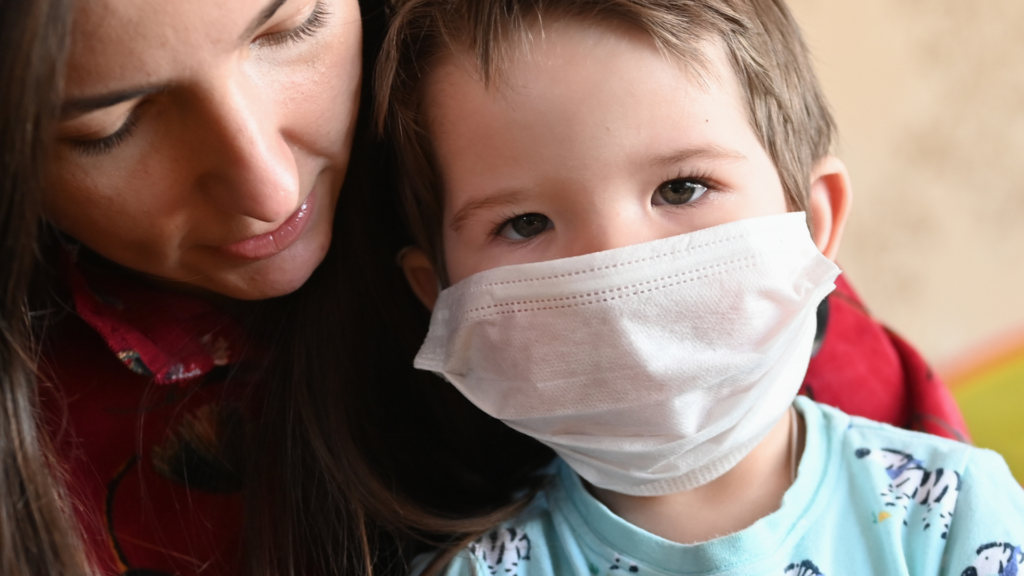Health Implications of Mask Wearing

Mask wearing increases the incidence of mouth breathing. Mouth Breathing increases sympathetic tone, which increases cortisol levels. Chronically elevated cortisol is implicated in the progression of myriads of degenerative diseases from heart disease and cancer, to Alzheimer’s and diabetes.
Mouth breathing increases stress and anxiety and causes high blood pressure, increasing chances of major cardiovascular events including heart attack and stroke.
Mouth breathing causes dry mouth which changes the oral microbiome and increases the incidence of periodontal disease, fungal infections, halitosis, respiratory infections, asthma, and tooth decay.
Mouth breathing affects oral-facial development in youth. It can lead to morphological changes in their growth patterns, with significant quality of life consequences that will plague them the rest of their life.
Mouth breathing positions the tongue down and back, which leads to retrognathic mandibular growth that further impedes and collapses the airway, it also leads to excessive maxillary growth and high arched palates that compromise the nasopharyngeal airflow.
Children with such problems often present with increases in anxiety, irritability, ADD, ADHD, and depression as well as higher incidences of tooth decay. Children that suffer from mouth breathing are also destined for issues with obstructive sleep apnea and the comorbidities that travel with it.
People wearing masks start mouth breathing to compensate for nasal obstruction and airway resistance. Infants, children, and adolescents, in particular, are affected negatively because they are still growing. Their skeletal growth is directly impacted.

Many schools are requiring children to wear masks. Ironically, impeding their airway impedes their ability to learn during memory-related tasks. Empathy towards each other is reduced. Facial cues and the learning of nonverbal communication skills are drastically reduced. Wearing masks reduces the visual field of the wearer, putting the wearer and others at risk if those wearing the mask are operating machinery or driving vehicles.
Consistent mask-wearing has reduced people’s concern about their overall oral hygiene. Regular tooth brushing has gone down, and incidences of tooth grinding and bad breath have gone up. Night-time tooth grinding often accompanies mouth breathing and airway obstruction. Mask wearing leads to chronic rhinosinusitis that can lead to fungal or bacterial intracranial abscesses. It brings with it the host of problems associated with mouth breathing listed above.
We are creating an entire generation that will be overwhelmed with health issues that are and will be a direct result of the interventions imposed during this historic time of mass hysteria.
STOP MASKING OUR CHILDREN.
PUBLISHED RESEARCH ON THE TOPIC:
https://pubmed.ncbi.nlm.nih.gov/2199902/
https://pubmed.ncbi.nlm.nih.gov/20129889/
https://pubmed.ncbi.nlm.nih.gov/33691678/
https://pubmed.ncbi.nlm.nih.gov/1908986/
https://pubmed.ncbi.nlm.nih.gov/21299381/
https://pubmed.ncbi.nlm.nih.gov/6996532/
https://pubmed.ncbi.nlm.nih.gov/7836205/
https://pubmed.ncbi.nlm.nih.gov/14992680/
https://pubmed.ncbi.nlm.nih.gov/18639345/
https://pubmed.ncbi.nlm.nih.gov/8964736/
https://pubmed.ncbi.nlm.nih.gov/8572325/
https://pubmed.ncbi.nlm.nih.gov/21769510/
https://www.ncbi.nlm.nih.gov/pmc/articles/PMC6137615/
https://pubmed.ncbi.nlm.nih.gov/34214661/
https://pubmed.ncbi.nlm.nih.gov/20824738/
https://pubmed.ncbi.nlm.nih.gov/8599744/
https://pubmed.ncbi.nlm.nih.gov/17464234/
https://pubmed.ncbi.nlm.nih.gov/33362401/
https://pubmed.ncbi.nlm.nih.gov/33923935/
https://www.ncbi.nlm.nih.gov/pmc/articles/PMC8072811/
https://pubmed.ncbi.nlm.nih.gov/33841736/
https://pubmed.ncbi.nlm.nih.gov/33670983/
https://pubmed.ncbi.nlm.nih.gov/33983986/
https://www.ncbi.nlm.nih.gov/pmc/articles/PMC4047298/
https://pubmed.ncbi.nlm.nih.gov/34072444/
https://www.ncbi.nlm.nih.gov/pmc/articles/PMC5455070/
https://pubmed.ncbi.nlm.nih.gov/31518511/
https://www.bmj.com/content/369/bmj.m2003.long
https://pubmed.ncbi.nlm.nih.gov/33769542/
https://pubmed.ncbi.nlm.nih.gov/7974312/
https://pubmed.ncbi.nlm.nih.gov/32050802/
https://pubmed.ncbi.nlm.nih.gov/29159176/
https://www.ncbi.nlm.nih.gov/pmc/articles/PMC2474765/
https://www.ncbi.nlm.nih.gov/pmc/articles/PMC4263906/
https://pubmed.ncbi.nlm.nih.gov/31518952/
https://pubmed.ncbi.nlm.nih.gov/7894471/
https://www.ncbi.nlm.nih.gov/pmc/articles/PMC3037818/
https://pubmed.ncbi.nlm.nih.gov/22211876/
- Thanks to Dr. Samuel Peterson for allowing us to publish this extensive list of research and his proffesional opinion on the topic of masking.




